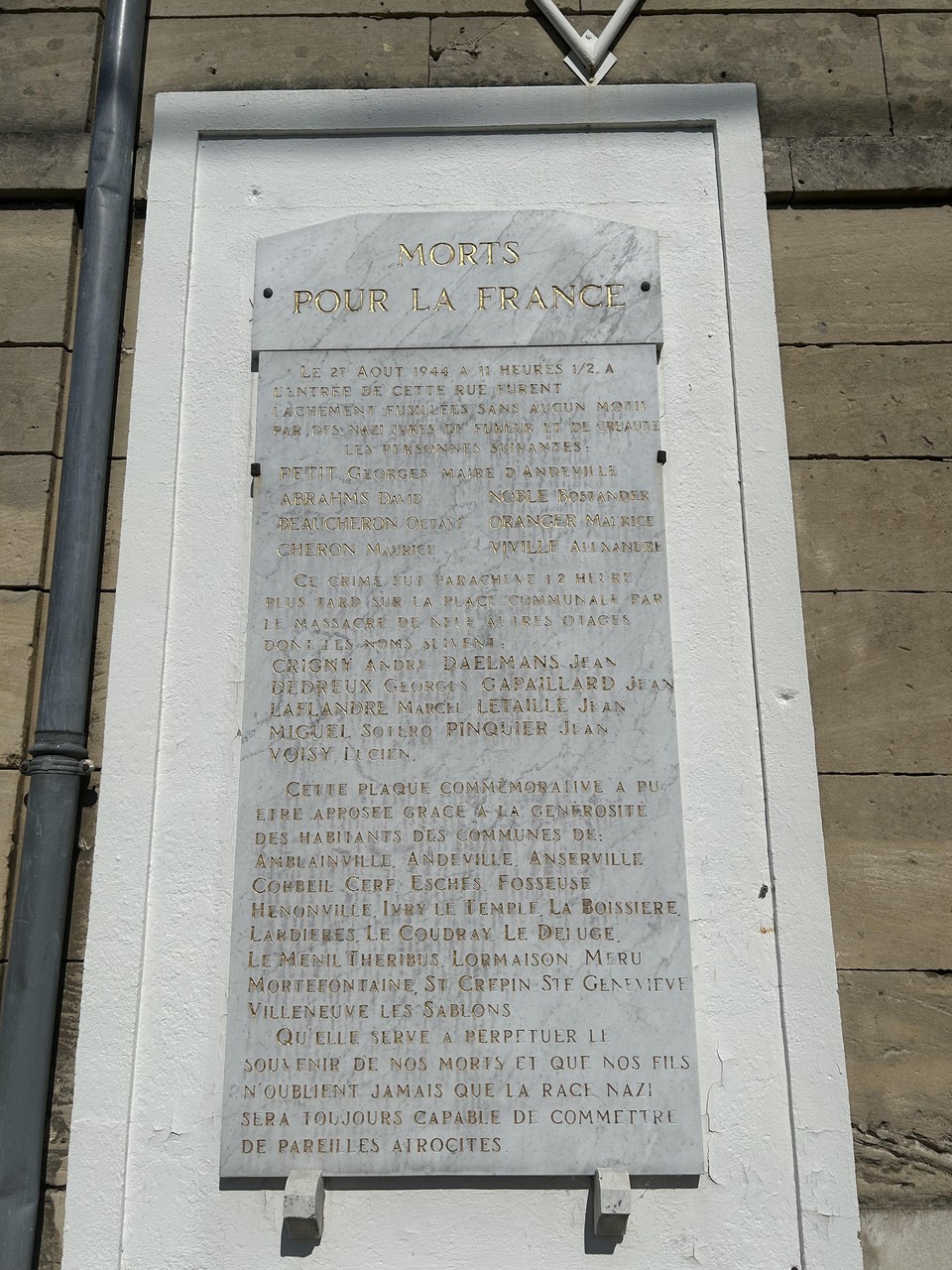On 23 August, a few days before the massacre, a German soldier, posing as a deserter, was handed over to the local Resistance. He was given civilian clothes and lodged in the neighbouring town of Laboissière, from which he managed to escape on 26 August.
The next day at around 11:00am, about 60 German soldiers arrived in trucks, cars and on motorcycles and took up positions in the village square and the surrounding districts. The Mayor of the municipality, refusing to denounce the members of the resistance network, was shot, as well as several people in the street who were trying to escape. A group of soldiers shot the resistance leader and two South African soldiers who were hiding in the mayor’s house and then set the house on fire with a grenade.
As a result, the houses in the neighbourhood were requisitioned. Additionally, 35 people were lined up in front of the church wall on the Place de la République. Eight of them were shot, one by one, by the so-called German "deserter". The commander of the operation ordered the Abbé Guerville (appointed Mayor after the death of the previous Mayor) to dispose of the bodies before 19:00. They were buried in a mass grave.
The massacre at Andeville left a terrible mark on the population: on 5 September 1944, several newly elected officials asked the prefect to execute 100 SS men as a form of revenge.
After the liberation, the bodies were exhumed and placed in individual graves in a memorial plot. A ceremony in their honour took place on 3 September 1944. The bodies of the two South African soldiers were buried in the Commonwealth War Memorial Plot in the local cemetery. After the war, the municipality ensured that the memory of the victims was preserved on the very site of the massacre.
The commemorative plaque for the victims of the Andeville massacre hangs on the wall of the church and bears the names of the victims.
58 rue des 17 Martyrs, Andeville, 60570
contact@andeville.fr / +33 44 52 08 12
